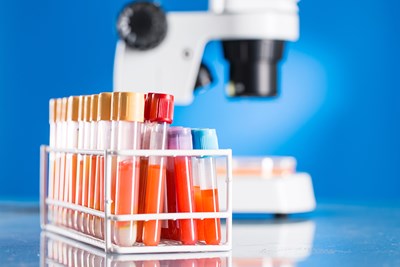The A1C test is used for the diagnosis of diabetes (type I or type II), as well as long-term management of the diseases based on blood sugar levels. According to the Mayo Clinic, it is also referred to as “glycated hemoglobin, glycosylated hemoglobin, hemoglobin A1C and HbA1c” tests. Here’s a look at the ins and outs of the A1C test.
How does it work?
According to the National Institute of Health, red blood cells in the body take about three months to die. During the months of cycling, hemoglobin (a protein in red blood cells) carries around an attachment of glucose (or sugar) through the system—thus, blood sugar. The A1C test takes a measurement of how much glucose is on hemoglobin over the course of those three months.
Hemoglobin with glucose on it is considered “glycated;” more glycated hemoglobin means more glucose in the blood. This measurement is converted into an average percentage, and the higher the number, the worse the body’s control over blood sugar levels.
How do I know the A1C test is accurate?
Each test can be about a half percent off in each case. However, the National Glycohemoglobin Standardization Program (NGSP) provides doctors with levels of accuracy. While a half percent may seem like a small amount, it could indicate no presence of diabetes when a patient is actually prediabetic or suggest prediabetes when diabetes would be a correct diagnosis.
However, the A1C test has improved greatly over the years. The test can be standardized, so that results do not differ across different types of A1C tests. Additionally, the A1C test is more accurate and consistent, thanks to the NGSP’s developments.
When is the A1C test used?
If you go to your doctor with concerns regarding diabetes-like symptoms, they may use the A1C test to check your initial glycated hemoglobin average. There are other tests that can be used to diagnose both types of diabetes or prediabetes levels of blood sugar. However, according to the National Institute of Health, the A1C test can be used alone with an “NGSP-certified method for analysis to ensure the results are standardized,” or in tandem with other tests. Sometimes, these tests can contradict each other, especially in earlier stages of the disease.
What’s a “good” score?
The National Institute of Health reports a score below 5.7% as normal; however, the American Diabetes Association recommends a score below 7%. Regardless, lower numbers indicate lower levels of glucose attached to hemoglobin.
The National Institute of Health goes on to say that prediabetes is suspected at 5.7% to 6.4%, with diabetes being diagnosable at 6.5% and above. Those who are considered prediabetic, should be tested annually; after diagnosis, the A1C test is generally performed bi-annually.



